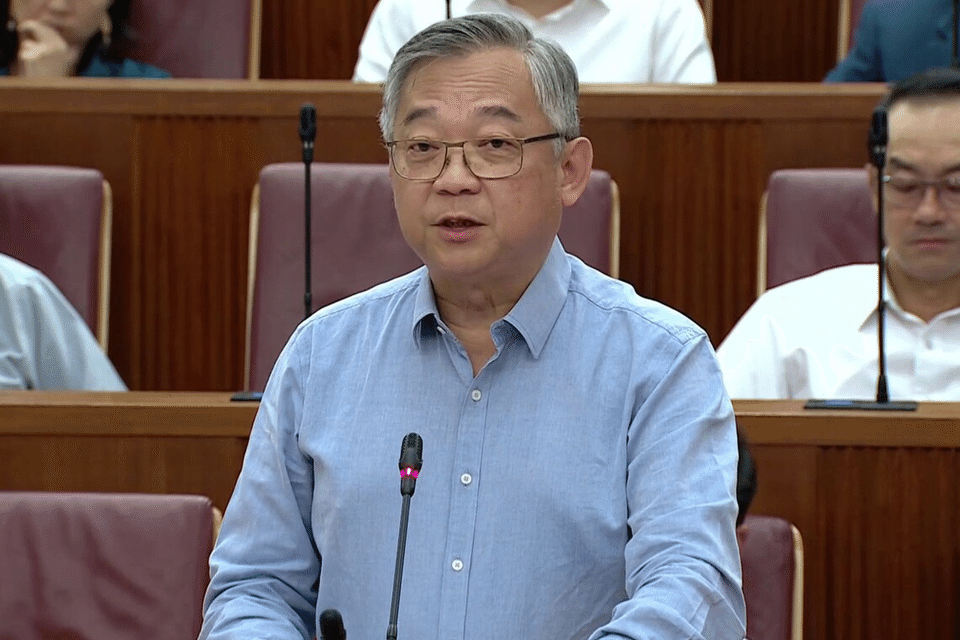S’pore can focus on opportunities in a changing world to boost economic growth to 3%-4%: DPM Gan

(Photo credit: MDDI)
Source: The Straits Times
No matter how formidable the challenges are, Singapore should focus on the opportunities and try to grow its economy at a faster-than-expected clip, said Deputy Prime Minister Gan Kim Yong.
He said Singapore’s economy over the decade is expected to grow at an annual rate of 2 per cent to 3 per cent – a pace comparable with many other small, advanced economies such as New Zealand, Sweden and Switzerland.
“But we should not take that as a given. Instead, we should aim higher,” he said in Parliament on Sept 22.
DPM Gan, who is also Minister for Trade and Industry, said Singapore should take advantage of the window of opportunities over the next few years to achieve a faster rate of growth to make the economy stronger, before it settles down to the 2 per cent to 3 per cent long-term-trend rate.
However, he warned that boosting growth will not come easily, given the deteriorating global trade and economic environment and challenging domestic trends.
He said: “The global developments we have seen over the past few months are not a passing storm; instead, they point towards a changed world – a new norm that is more fragmented, with sharper competition for investments, and a shift towards economic security and national interest.
“These call for a new economic blueprint to steer Singapore forward in this changed world.”
Domestically, Singapore’s workforce will grow as slowly as 1 per cent a year over the next decade, owing to an ageing workforce and falling birth rates. Productivity growth will be around 1 per cent to 2 per cent in the same period.
Also, there will be times when a slowdown in the global economy will put a drag on domestic growth.
Still, artificial intelligence (AI), robotics and automation present opportunities to boost productivity, while efforts should be made to grow higher-value-added industries.
“If we do it right, we may be able to add 1 per cent and achieve 3 per cent to 4 per cent growth instead of 2 to 3 per cent, and, in very good years, maybe more,” he said.
DPM Gan said Singapore today is facing three critical challenges – barriers to trade and investment; rapid acceleration of technological advancements that could disrupt industries and jobs; and limited resources such as land, carbon and manpower.
“However, amidst these challenges and difficulties, there are opportunities and new possibilities.”
As companies worldwide diversify their production bases and supply chains in response to the global economic landscape, there will be opportunities for capturing new investments and new markets.
Technology can also open up new frontiers for research and innovation, and drive the creation of new products and services, and even new industries.
Similarly, the low-carbon transition will catalyse the growth of the green economy, such as green manufacturing, clean energy, carbon services and trading, and sustainable finance.
Touching on South-east Asia, DPM Gan said the region could offer strong growth potential with its young population, rising middle class, and good physical and digital connectivity.
DPM Gan said efforts to define a new economic blueprint for a changed world are already under way under the Economic Strategy Review.
The basic idea is to strengthen Singapore’s position in existing growth sectors, such as advanced manufacturing and financial services, and at the same time establish a strong foothold in new areas of growth, he said.
New growth areas where Singapore can establish a foothold include the precision medicine industry, which is projected to grow at an average of 11 per cent annually to reach a size of US$300 billion (S$385 billion) globally by 2035.
Other new potential growth areas could include AI and deep tech, the green economy, autonomous vehicles and space.
Singapore should also strengthen its economic fundamentals to stay competitive by deploying and adopting new technologies and upskilling its workforce.
DPM Gan said: “As we transform our economy towards higher-value-added activities, we must also ensure that our upskilling and reskilling efforts keep pace. We must empower workers with new skills for the future, including being AI-fluent.”
He said that while local workers should gain overseas work exposure and experience, Singapore must also stay open to global talent.
Singapore should also not lose sight of the immediate challenges that some of its small and medium-sized enterprises are facing, including those in the retail sector, as well as heartland enterprises.
He said strengthening regional and global trade connectivity will be key, given that Singapore’s trade is three times the size of its gross domestic product.
“Our circumstances may be challenging, but our foundations are strong,” said DPM Gan.
He added: “Together with determination and imagination, we can continue to grow our economy, create good opportunities for our people, and build a better and brighter future for Singapore and Singaporeans.”
